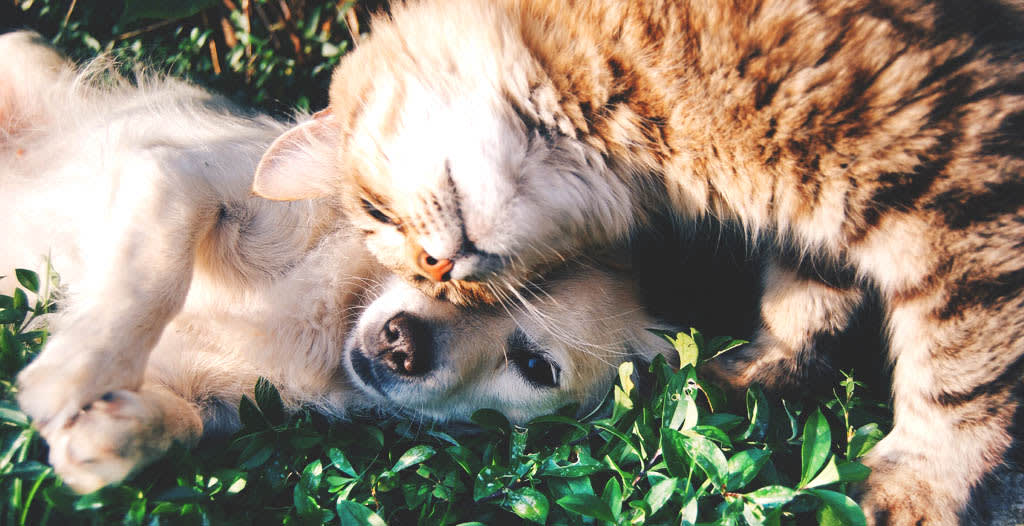
Pets are loving, loyal animal companions – and important family members. Losing a beloved pet is a painful and traumatic experience and it can be difficult to say a final goodbye. Planning a pet funeral is a respectful way of memorializing the special bond between humans and animals, as well as honoring your pet as a valued family member.
How to Handle Your Pet’s Remains
Losing a beloved pet is hard enough, but you also need to decide how to handle their remains. Because pets are members of the family, it makes sense to include everyone in the discussion and respect their opinions.
It helps to have a plan in place before your favorite animal companion passes on. While the thought of pre-planning a loved pet’s funeral isn’t pleasant, it’s better to make arrangements sooner rather than later. It provides family members the opportunity to discuss the best options for end-of-life care, and helps to avoid the pressure of making a rash decision during such a difficult time.
Pet Burial
Burying a pet at home is an attractive option for many pet parents. It’s simple and cost-effective, and you can hold a personalized memorial service in the privacy of your own home.
Before you start to dig your beloved pet’s final resting place, however, be sure to check the local laws and ordinances in your area regarding home burials. Some locations prohibit it entirely, while others require specific permits that must be obtained in advance. Make sure that you understand all the legal restrictions in place.
Home Burial
If you are allowed to bury your pet on your own property, choose a burial spot that has special meaning to the family (but is located far enough from underground utility lines and cables). If your pet was euthanized, bury the body away from nearby water sources to prevent contamination issues.
The depth of the grave should be at least three feet (4-5 feet deep for larger pets) to prevent wildlife from digging up the remains. Place your pet in a blanket or in a wood/biodegradable box and carefully lower them into the ground. Cover up the grave with two or more feet of topsoil and pack it down as much as possible. Lay a decorative grave marker on top to formally recognize your pet’s final resting place.
Pet Cemetery
If home burial isn’t allowed in your area, consider a pet cemetery. While it may be more expensive than pet burial at home, a pet cemetery takes care of all the legal necessities and acts as a permanent memorial home for your beloved animal companion. If you move away, you can always come back and visit your pet’s grave during special holidays and anniversaries.
Engaging the services of a pet funeral home simplifies the pet burial process as they take care of transporting the body, assist with the funeral or memorial service, and work with the pet cemetery to manage the burial itself.
Pet Cremation
If you don’t have an adequate place to bury your pet at home (or if home burial is prohibited in your area), pet cremation is an excellent option. The cremation process for animals and humans is more or less the same, although pet crematories offer both private and group (communal) cremation services.
If you prefer not to receive your pet’s cremated ashes, you can opt for group cremation – it costs less than a private cremation since two or more animals are cremated at the same time. You are still able to request your pet’s ashes, but you will also receive ashes from the other animals as there’s no easy way to separate the remains.
Most pet funeral homes offer private cremation packages, which include pickup from your home or veterinary facility, individual pet cremation, and the return of your pet’s cremated remains in a box or urn. The crematory may provide a basic container, or you can buy a cremation urn of your choosing.
What to Do with Cremated Ashes
Some pet parents prefer to keep their pet’s ashes close to them by storing the urn in the family home. You can create a memorial space for your beloved pet that is secure, protected, and always nearby. Pet cremation jewelry and keepsakes are also creative ways to store small amounts of your pet’s ashes.
Some pet parents choose to scatter the cremated ashes in a meaningful place or in a pet cemetery scatter garden. Remember that you must obtain permission before scattering ashes on private property or public land.
Another option is to simply bury the cremated remains at home in the yard. If you bury your pet’s ashes, first research your local area burial regulations, obtain a permit (if necessary), and avoid digging near underground utility lines or water tables.
An urn usually doesn’t require as much burial space as a body does, and if you choose an environmentally-friendly biodegradable urn, it will break down over time. If you prefer to bury only the cremated remains, mix them with an organic soil mixture to counter pH levels and spread the ashes around the grave to avoid concentration.
How to Plan a Pet Funeral
Many pet owners hold a funeral service to honor and remember their pets. A pet funeral provides an opportunity to say a final goodbye to a faithful friend and family member, and can help people cope with the grief and pain of losing a beloved pet.
You can also have a funeral or memorial service for your pet if you choose cremation, displaying the urn during the ceremony. A pet funeral ceremony can be small and intimate for close family only, or you can invite friends and other guests who knew and loved your furry friend. Other funeral elements can be featured as desired:
- Pet obituary – Many pet parents write loving pet obituaries, which can be posted online and shared on Facebook or other social media networks.
- Eulogy – Prepare a eulogy or special tribute in honor of your pet’s life. You can also ask funeral attendees to share personal stories or memories of your pet, or read special poems or spiritual passages.
- Music – Music is inspirational and relaxing. Sing or play special songs as a soothing accompaniment during the funeral service.
- Flowers and Candles – Funeral flowers, wreaths, and candles add a personal touch.
- Photos – A funeral portrait acts as an important visual reminder of your beloved pet’s personality and presence. You can also show a short video compilation of special moments in your pet’s life.
End the funeral service with a final prayer/tribute and allow guests to pay their last respects. Afterwards, people can gather together at a reception to offer their sympathy and support to the pet parents. If you need additional help planning a pet funeral, talk to your local pet funeral director, pet crematory, or cemetery professional.
Coping with Grief
Losing a beloved pet is a traumatic experience, so it’s important to learn how to cope with the intense emotions of a loss. We hope that our guide to understanding the five stages of grief helps you on your journey.








